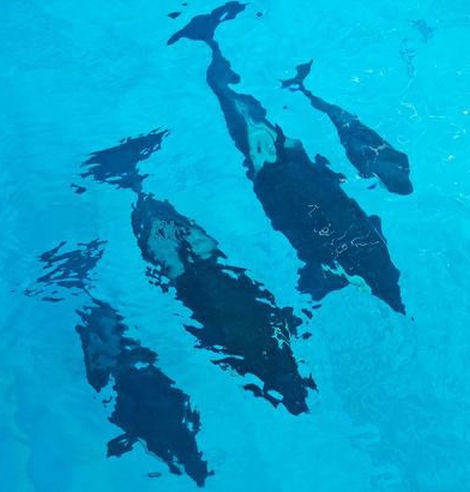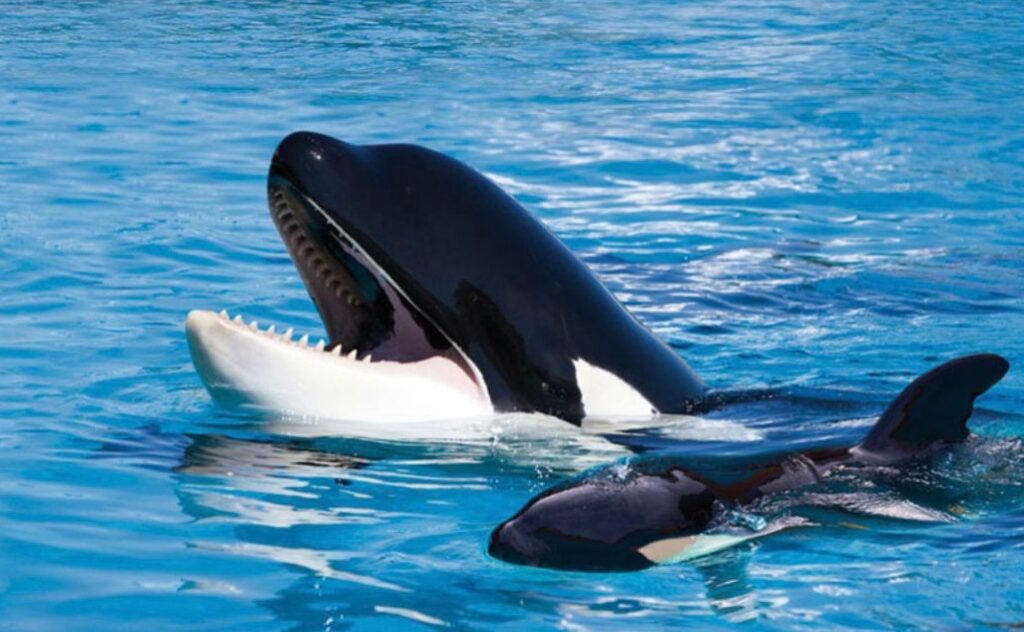In the wild, the average viable calving interval for female orcas is 5 years. Although a calf stops nursing at around two years old, the calving interval is prolonged to ensure a calf has effectively acquired valuable social and behavioural skills before the mother’s attention is diverted to a subsequent calf. In captivity, this vital period of learning is often ignored and mothers are frequently put under relentless physiological pressure to ensure lots of calves are produced in a short amount of time. The average calving interval for orcas in captivity is 3 years and 9 months – noticeably shorter than in the wild.

Photo by SeaWorld (Kamea, Sakari, Takara and Kyara).
The average calving intervals per facility are as follows:
Marineland of the Pacific: 2 years and 9 months
Marineland Canada: 2 years and 11 months
Vancouver Aquarium: 3 years and 1 month
Marineland Antibes: 3 years and 4 months
Kamogawa SeaWorld: 3 years and 8 months
SeaWorld: 4 years
Although SeaWorld has a calving interval higher than the average in captivity, it’s a very slight and insignificant difference. As you can see, SeaWorld’s average has a calving interval somewhat close to that it in the wild, however, it is important to note that only 4 out of 8 viable multi-birth mothers reached and surpassed this average. The female orca in captivity who has the lowest calving interval (660 days) happens to be SeaWorld’s 15-year-old female, Kohana, who currently resides at Loro Parque.

Photoshopped by Loro Parque (sourced via Orca Pod Wiki)
Disclaimer: Only viable calves have been included in this analysis. Therefore, all stillborn calves, miscarriages and calves who died with their mothers have been excluded. Because of this, many mothers had to be excluded from the analysis as they may have had only one viable calf so they do not have a viable calving interval. Haida 2 was included in SeaWorld’s average as it is due to SeaWorld’s breeding programme that she had a second viable calf and thus has a calving interval. Additionally, Kohana gave birth to both of her calves while under SeaWorld’s ownership so has been included in SeaWorld’s average. SeaWorld has since transferred ownership of Kohana to Loro Parque in Spain.